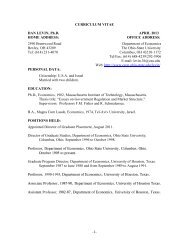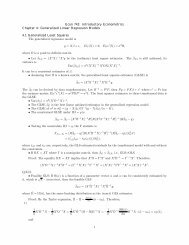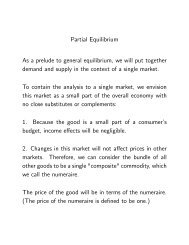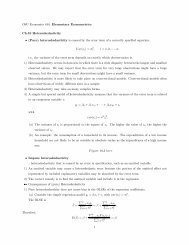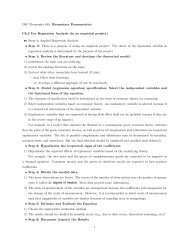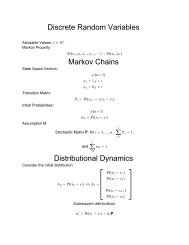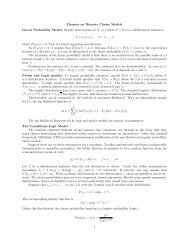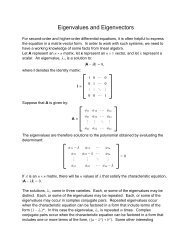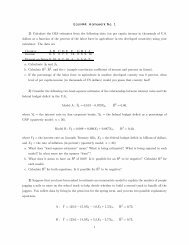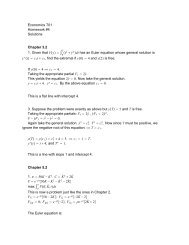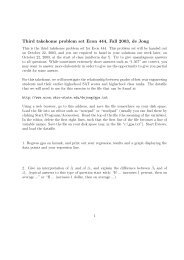Social Interactions and Endogenous Association - Department of ...
Social Interactions and Endogenous Association - Department of ...
Social Interactions and Endogenous Association - Department of ...
Create successful ePaper yourself
Turn your PDF publications into a flip-book with our unique Google optimized e-Paper software.
<strong>and</strong> then estimates that include the neighborhood variables. The substantial reduction in<br />
the sample reduces the precision <strong>of</strong> the estimates, but neither the change in sample, nor<br />
the inclusion <strong>of</strong> the neighborhood variables substantially affects the point estimates.<br />
V. B. Macro-Group Composition<br />
Under the assumption that people prefer to associate with others who are similar<br />
to themselves, the model implies that for people who have a particular (binary)<br />
characteristic, there should be a concave relationship between the share <strong>of</strong> their<br />
associates that have that characteristic <strong>and</strong> the share <strong>of</strong> the group that has that<br />
characteristic. For people who do not have that characteristic, the model implies that<br />
there should be a convex relationship between the share <strong>of</strong> their associates that have that<br />
characteristic <strong>and</strong> the share <strong>of</strong> group that does. The difference in the share <strong>of</strong> associates<br />
who have the characteristic between people with <strong>and</strong> without it will be hump-shaped.<br />
Intuitively, once a small number <strong>of</strong> people with a characteristic are introduced, the people<br />
who also have that characteristic will be able to have associates who are similar to<br />
themselves; people without the characteristic will not be forced to associate with people<br />
with it until most <strong>of</strong> the group has the characteristic.<br />
We test this hypothesis by regressing the share <strong>of</strong> peoples’ associates who have<br />
some exogenous binary characteristic,<br />
the characteristic,<br />
G<br />
x<br />
i<br />
A<br />
x<br />
i<br />
, on cubics in the share <strong>of</strong> the group who have<br />
, <strong>and</strong> these cubics interacted with the person’s value for the<br />
characteristic, x<br />
i<br />
. We focus on race <strong>and</strong> ethnicity because <strong>of</strong> the strength <strong>of</strong> sorting on<br />
them (as shown in Table 3). 13 Formally, we estimate,<br />
13 Results are not reported for Indians because less than 3% <strong>of</strong> school-grades are 15% or more Indian.<br />
25



